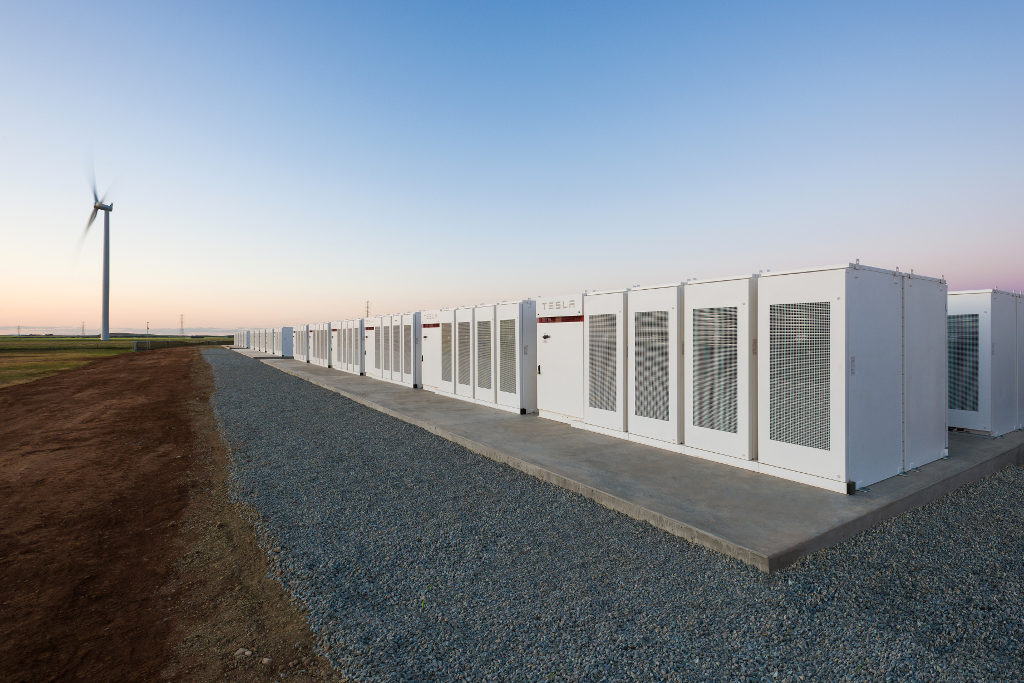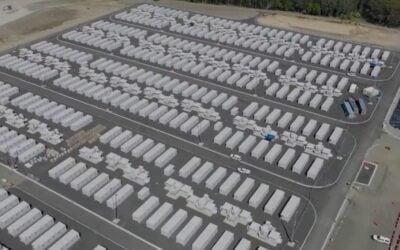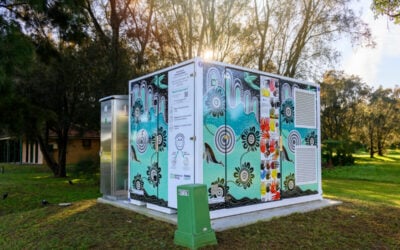
Australian state governments of Western Australia and the Northern Territory have budgeted for measures to support renewables in the past few days, primarily through supporting batteries at large-scale, residential and community level.
The Northern Territory announced that it has approved procurement for a large-scale battery system to help balance the local Darwin-Katherine electricity grid. Although it will cost around AU$30 million (US$18.34 million), the state government expects it to “pay for itself in approximately five years”.
The NT Government stated in a media release that the battery can help increase stability and reliability of power supply, including helping to balance out “fluctuations caused by the increasing levels of household and business behind-the-meter solar,” while reducing carbon emissions significantly. Reducing carbon emissions means reducing reliance on gas generators – this in itself could save the NT around AU$6.4 million per year. The large-scale battery system can also help any large-scale solar plants in the region as they integrate their output into the grid in the future.
Local community sector environment organisation Environment Centre NT (ECNT) wrote on its website that it isn’t just solar that fluctuates however, with gas and coal also subject to weather conditions and other factors that can cause fluctuation or failure.
Try Premium for just $1
- Full premium access for the first month at only $1
- Converts to an annual rate after 30 days unless cancelled
- Cancel anytime during the trial period
Premium Benefits
- Expert industry analysis and interviews
- Digital access to PV Tech Power journal
- Exclusive event discounts
Or get the full Premium subscription right away
Or continue reading this article for free
“Grids are essentially ‘wobbly’ but are stabilised through technology and as the cost of battery storage continues to fall, it simply makes good economic sense to install grid-scale battery storage on the Darwin-Katherine grid,” ECNT said.
“In short, no matter what it is powered by – renewable energy or fossil fuels – the NT electricity system will benefit from storage,” the organisation commented, adding that since solar energy is so cheap, the additional cost of using the battery can be easily paid for by solar plant operators. A procurement process will now take place, and the battery energy storage system (BESS) is expected to go online by the second half of the year 2022.
As with another state, South Australia, the Northern Territory is now opening up a financial support scheme to encourage households and businesses to also purchase their own solar-plus-storage systems too.
A grant of AU$6,000 is being offered for PV systems with inverters and battery equipment selected from an approved list of vendors. Batteries must have a capacity of at least 7kWh. Meanwhile, a government-owned energy supply startup, Jacana Energy, will offer a standard feed-in tariff (FIT) of AU$0.083 / kWh to “all new businesses and households with behind-the-meter solar installations of up to 30kW in size”.
“This is just the sort of initiative needed to boost consumer confidence and keep people employed during these uncertain times,” the national Clean Energy Council’s chief executive Kane Thornton said, congratulating the local government on its solar and battery stimulus package, calling on “all other state and territory governments to follow their lead”.
The battery support scheme is expected to be paid for by savings made on regular feed-in tariff policies expiring or degressing. Around 130 battery installations will be paid for meanwhile using a budget pool of AU$800,000. However, existing grants under other NT Government schemes will expire. The Government said this is in line with its ‘Roadmap to Renewables’ report, which has the state aiming towards 50% renewables by 2030.
Community power: ‘the sort of energy policy all Australian energy customers need’
Over in Western Australia, the state energy minister Bill Johnston introduced “the sort of energy policy all Australian energy customers need,” according to the Clean Energy Council’s director of distributed energy.
The minister last week announced that utility customers in the state will be able to access so-called ‘community Powerbanks’. That means neighbourhood batteries that store solar energy as well as helping networks to balance the grid – and reduce their costs.
“This is the sort of energy policy all Australian energy customers need. Australians love solar, and in coming years we expect rooftop solar to supply more than half of our electricity needs. All governments should follow WA’s lead by embracing the opportunities of solar and batteries,” Clean Energy Council rep Darren Gladman said.
The community Powerbanks will be rolled out and installed in 10 towns in WA by the end of this year. The state’s electricity network already sources some 45% of its energy from rooftop solar, while the local government has produced its own Distributed Energy Resources Roadmap, a “five-year plan to guide the better integration of all distributed energy resources, including solar panels, battery storage and electric vehicles, and ensure that the benefits are shared across all members of the community,” according to the government’s website.
A recent webinar hosted by trade association group the Smart Energy Council heard from various industry parties that the solar and storage sectors in Australia have been busy even during, or perhaps because of, the current COVID-19 crisis.
Australia’s national Federal government has appeared slow to act on climate change and in particular continuing to favour support for domestic coal mining, generation and export industries. However, even before COVID-19-related stimulus packages began to be introduced, regional governments across Australia’s six states were all making significant strides forward in using energy storage to integrate increasing amounts of solar.
Energy-Storage.news reported recently on various community projects along with large-scale solar-plus-storage in the state of New South Wales, while an analysis report into the operation of the South Australia virtual power plant earlier this month showed it to have been effective in helping balance the network, especially in times of need, while also generating significant revenues. This is in addition to the successful operation of Neoen-Tesla’s Hornsdale 129MWh battery in South Australia and the ongoing development for an even bigger battery project in Queensland at 150MWh, for which major utility AGL has signed a 15-year “operational dispatch rights” contract already.





